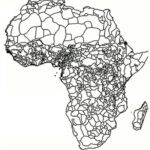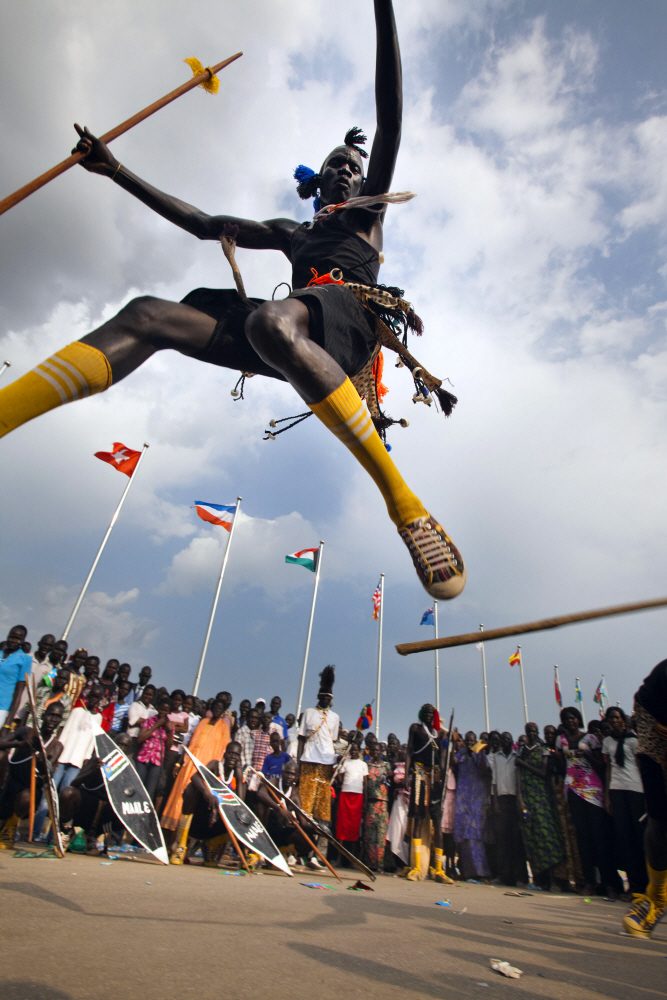The discourse about South Sudan these days is whether a genocide is in the making. The discussion is not about politics, not about power struggles, and certainly not about the development of the country. More and more horrors are being reported. Tribal hatred boils over.
Genocide requires a good organization, as was the case in 1994 in Rwanda. The authorities in South Sudan show themselves hopelessly incompetent in ruling the country. So when they really would want to have a genocide it is questionable that they can organize one. But in massacres they are highly skilled, as in 2013 when thousands Nuers were killed by soldiers of Dinka descent. And the opposition has shown itself to be capable of mass killings as well, see what happened in retaliation against Dinka’s in Bor and Bentiu in early 2014.
So it remains an academic debate whether or not a genocide is imminent. The number of large massacres is already frightening.
Children’s bodies with machete wounds and the charred corpses of people whose hands and legs were tied. Women gang raped, men arrested at random. That’s the latest, horrific image recorded by a reporter from the Associated Press in Yei, a town about 150 kilometers south of the capital, Juba. UN chief Ban Ki-moon warned recently of a high risk of new massacres in South Sudan and said that the United Nations will not able to prevent it.
Adama Dieng, Special Adviser to the United Nations for the prevention of genocide, had previously been in Yei. He also painted a very depressing picture. Ethnic hatred and the targeting of civilians could lead to a genocide when there is not an immediate intervention, was his cry of alarm.
The South Sudanese population suffered greatly during the war of liberation against Sudan. Between 1983 and 2005 more than a million people died in the struggle against the Arabized north. And the population again became victim when the leaders plunged the young nation into a civil war in late 2013 between forces of President Salva Kiir and ousted Vice President Riek Machar.
And now there are new horrors. This time there rages not just a conventional war between the units of President Kiir and his deposed rival, but also unruly militias join the battle. Moreover, so warn the UN, there is a climate created by hate speech in which tribal revenge could easily degenerate into large-scale bloodshed.
Verzoek te grootThe situation in and around the town of Yei speaks volumes. Long periods during the war against the Arabized northern Sudan there was peace in the region. Now the tribal hatred has reached the area. And Mundri, Torit and other areas of Equatoria have become unsafe as well.
The journalist from AP posted stories about fighters who attacked cars on the road from Juba to Yei and took members of certain tribes out to execute them. Citizens and local officials talked about government soldiers and to a lesser extent rebels who terrorize the population and kill people based on their tribal background.
Yei is located in the southern region of Equatoria. This is the most fertile part of the country and the people remained neutral in the conflict erupted in 2013 between Salva Kiir (the Dinka) and Riek Machar (a Nuer). Now it is seems the region is squeezed between the two.
The country’s largest tribe, the Dinka s monopolizes power under Kiir and his army chief Paul Malong. That is an eyesore for the Equatorians. There is no difference between the Dinka and the government, is how not only residents of Yei see it.
Dinka’s began to flee their traditional habitat north of Juba to Equatoria in 1991 when the Nuer caused carnage among Dinka’s in Bor. That influx into in Equatoria led to tensions: At that time people told me that “these black people“ (meaning Dinka´s) had to leave. Now similar tensions are worse, it takes the form of a war within a war.
Rich military commanders and ministers graze their herds of thousands of cows around Yei, thus stripping bare the fields of local farmers. Many residents say the army is behind the massacres, the soldiers are being seen as synonymous with Dinka. Also rebel groups linked to the opposition are involved.
The hatred against the Dinka’s takes dangerous forms. In areas of the country’s second tribe, the Nuer, this antipathy was already running strong and since army chief Paul Malong chased their leader Riek Machar in July out of the capital Juba many Nuer want revenge against the Dinka s. Whether this will lead to genocide is an open question but that many people will die, seems likely.
The peace plan of Eastern Africa for South Sudan stranded in July with the flight of Riek Machar from Juba. He has been sidelined. From his exile in South Africa he recently tried to return to Nuer area in South Sudan. Authorities in Ethiopia and then in Sudan refused him entry and he is now under a kind of house arrest in South Africa.
The East African region has for now largely sided with Salva Kiir. But Nuer will never accept that Riek Machar was deposed by a Dinka. So the battle between Dinka’s and Nuers continues, with all the risks that entails.
This article first appeared in NRC Handelsblad on 15-11-2016
Photo of Independence celebration in 2011 by Petterik Wiggers

